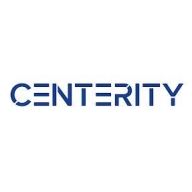

Centerity Monitor and Elastic Observability compete in the IT monitoring and observability space. Elastic Observability often appears more budget-friendly due to its robust capabilities and greater flexibility despite higher costs.
Features: Centerity Monitor provides comprehensive network monitoring, automated discovery, and tailored dashboards for IT infrastructure. Elastic Observability offers real-time analytics, machine learning insights, and seamless integration of logs, metrics, and traces for a holistic solution.
Room for Improvement: Centerity Monitor could benefit from enhanced analytics capabilities, broader integration options, and a more dynamic update cycle. Elastic Observability might improve its cost structure, user interface customization options, and support for more niche IT environments.
Ease of Deployment and Customer Service: Centerity Monitor features straightforward deployment with strong direct support. Elastic Observability offers flexible deployment options, including cloud setups, and relies on community engagement for additional assistance.
Pricing and ROI: Centerity Monitor presents lower initial costs, targeting immediate ROI through efficient resource use. Elastic Observability involves higher initial costs but offers greater long-term ROI with advanced features and scalability.
| Product | Market Share (%) |
|---|---|
| Elastic Observability | 2.9% |
| Centerity Monitor | 0.2% |
| Other | 96.9% |

| Company Size | Count |
|---|---|
| Small Business | 8 |
| Midsize Enterprise | 4 |
| Large Enterprise | 16 |
Elastic Observability offers a comprehensive suite for log analytics, application performance monitoring, and machine learning. It integrates seamlessly with platforms like Teams and Slack, enhancing data visualization and scalability for real-time insights.
Elastic Observability is designed to support production environments with features like logging, data collection, and infrastructure tracking. Centralized logging and powerful search functionalities make incident response and performance tracking efficient. Elastic APM and Kibana facilitate detailed data visualization, promoting rapid troubleshooting and effective system performance analysis. Integrated services and extensive connectivity options enhance its role in business and technical decision-making by providing actionable data insights.
What are the most important features of Elastic Observability?Elastic Observability is employed across industries for critical operations, such as in finance for transaction monitoring, in healthcare for secure data management, and in technology for optimizing application performance. Its data-driven approach aids efficient event tracing, supporting diverse industry requirements.
We monitor all IT Infrastructure Monitoring reviews to prevent fraudulent reviews and keep review quality high. We do not post reviews by company employees or direct competitors. We validate each review for authenticity via cross-reference with LinkedIn, and personal follow-up with the reviewer when necessary.